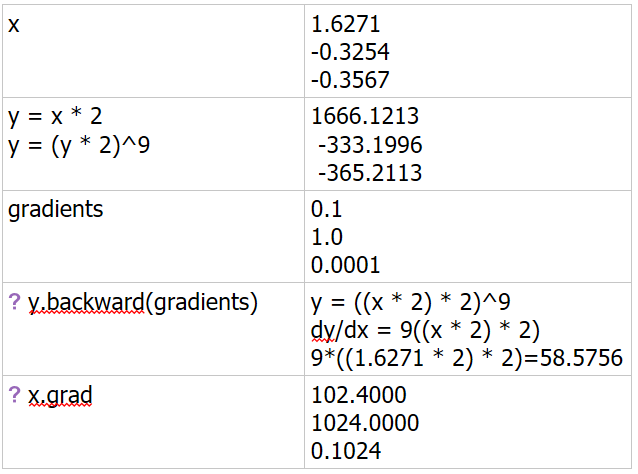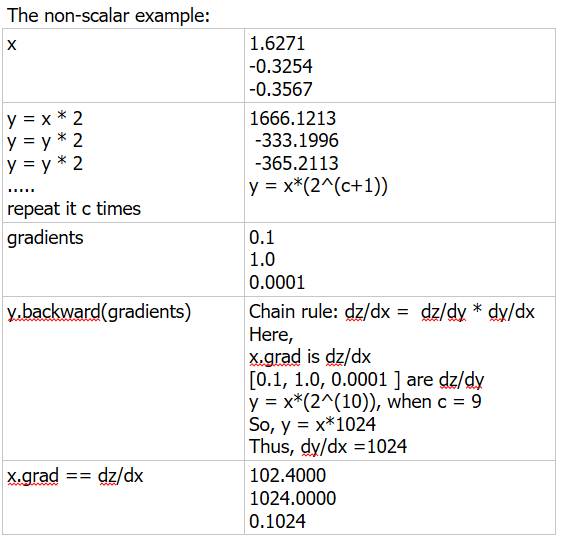I am new to PyTorch and Neural Network in general. I am following this tutorial: A Gentle Introduction to torch.autograd — PyTorch Tutorials 2.2.0+cu121 documentation
There are two examples of differentiation using backward(): one for scalar and one for non-scalar variable.
The scalar example:
imgur: the simple image sharer .png
The non-scalar example:

x = torch.randn(3) # input is taken randomly
x = Variable(x, requires_grad=True)y = x * 2
c = 0
while y.data.norm() < 1000:
y = y * 2
c += 1gradients = torch.FloatTensor([0.1, 1.0, 0.0001]) # specifying gradient because input is non-scalar
y.backward(gradients)print( c )
print(x.grad)
Output:
9
102.4000
1024.0000
0.1024
I tried to understand it as I did for scalar example:
But, I can’t figure out how it works.
I get exact same output for different values of c regardless of the input values:
8
51.2000
512.0000
0.051210
204.8000
2048.0000
0.2048
I know the math behind getting 4.5000 4.5000 4.5000 4.5000 for scalar example (shown above). Can you explain the math behind getting 102.4000 1024.0000 0.1024 for non-scalar example. Please explain how it is calculating y.backward(gradients)
I have also asked this question on stackexchange, but no one seems to answer it:
